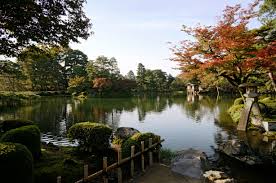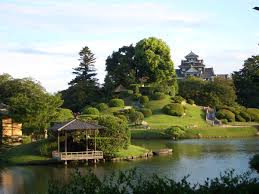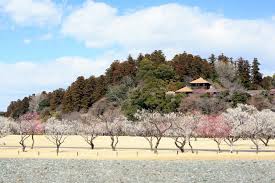Japanese gardens have evolved into a variety of styles, including karesansui, which are meditation gardens where white sand replaces water, and Zen gardens (Japanese rock gardens) that are used for various purposes. Garden design is an important Japanese art form that has been refined for more than a thousand years. The gardens of the emperors and nobles were designed for recreation and aesthetic pleasure, while the gardens of Buddhist temples were designed for contemplation and meditation
The following are the three major daimyo (historical rulers of Japan) gardens. Each garden is good for appreciating the beauty of snow, the moon and plum blossoms, and they are known as the three great − meaning outstanding − gardens of Japan.
Kenrokuen (Kanazwa, Ishikawa-ken)
Kenrokuen was built for the enjoyment of the daimyo in Kanazawa as a landscape garden designed for strolling in. Kenrokuen combines the six attributes of a perfect garden: a variety of ponds, streams, hills, groves, flower gardens, and several pavilions and tea houses. The winter scenery of snow-capped stone lanterns and pine trees protected by ropes is especially attractive.
Korakuen (Okayama, Okayama-ken)
Korakuen is said to be one of the best gardens in Japan in which to stroll. It was built in 1700 by Ikeda Terumasa, the daimyo of Okayama. It stands next to Okayama Castle and was used to entertain visitors and guests as well as for their own enjoyment.
Kairakuen (Mito, Ibaraki-ken)
A spacious garden famous for its plum trees, Kairakuen was built in the year 1841 by the local daimyo, Tokugawa Nariaki. Kairakuen served not only for the enjoyment of the daimyo but was also open to the public.



